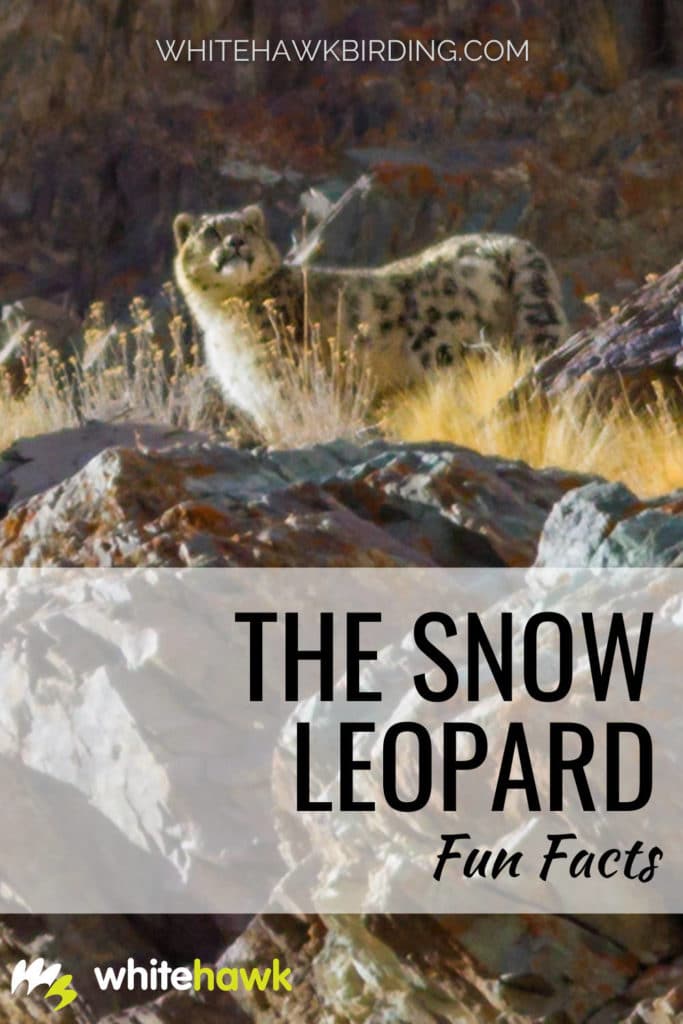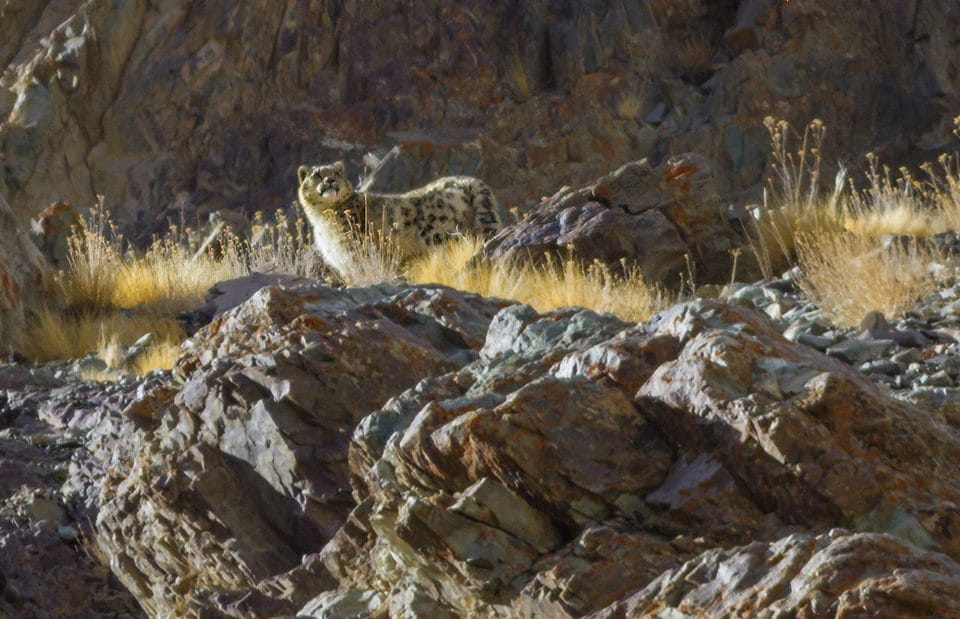
The first time I saw a Snow Leopard, I was a young girl visiting the Los Angeles Zoo. I remember being amazed by its spotted fur, light eyes, and, most of all, its long, powerful tail that seemed to almost be a separate creature! Never could I have imagined that one day I would get to cross the same valleys, take in the same views, and feel the chill of the same air as a wild Snow Leopard! The idea of seeing a Snow Leopard in its natural habitat seemed completely unattainable. I believed it was an opportunity available only to the greatest of adventurers.
All of that changed in the winter of 2014. That was the year Whitehawk made its first trip to India. After nearly a week of searching, we were able to view two snow leopards clamoring over rock and stone beneath a Himalayan sky. You can read our trip report here. On our second tour to India, we were lucky enough to get to watch a snow leopard for six days in a row as it had made a kill near our camp!
Read on to learn more about this amazing feline and how you might be able to see one in the wild, too.
Habitat and habits: Where does the snow leopard live?
The snow leopard makes its home in the mountain ranges of Central and south Asia. It mainly lives at elevations between 3,000-4,5000 meters (9,800 to 14,800 ft). It can be found in the mountains of Afghanistan, India, Bhutan, China, Mongolia, Tibet, Pakistan, Kazakhstan, Kyrgyzstan, Tajikistan, Uzbekistan, and in parts of Siberia, as well as in other areas throughout this region.
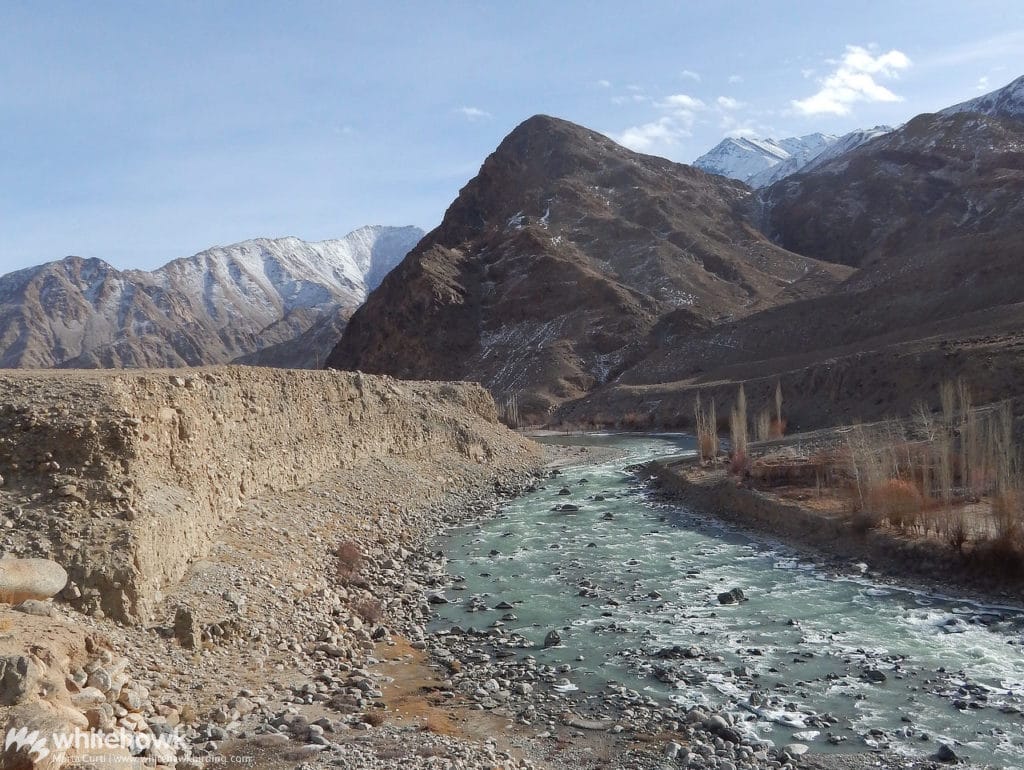
As you can imagine, snow leopards are well adapted to surviving in high elevations and extremely cold temperatures. In order to maneuver easily through the jagged peaks, steep cliffs and deep ravines, they are equipped with long hind legs and relatively short forelimbs. They also use their tails for balance when running or leaping across their rugged habitat. To protect themselves against freezing temperatures, they are covered in long, thick fur. They also use their impressively long tails, which can measure over 1 meter long, to wrap around themselves to keep them warm. Snow leopards also have large, wide, fur-covered paws that help them walk steadily through deep snow (like snowshoes!) while keeping their feet nice and warm.
What’s in a name?
The scientific name for the snow leopard is Panthera uncia. They are in the genus Panthera, along with other amazing felines such as lions, leopards, tigers, and jaguars. Interestingly enough, the snow leopard is more closely related to the tiger than it is to other leopards.
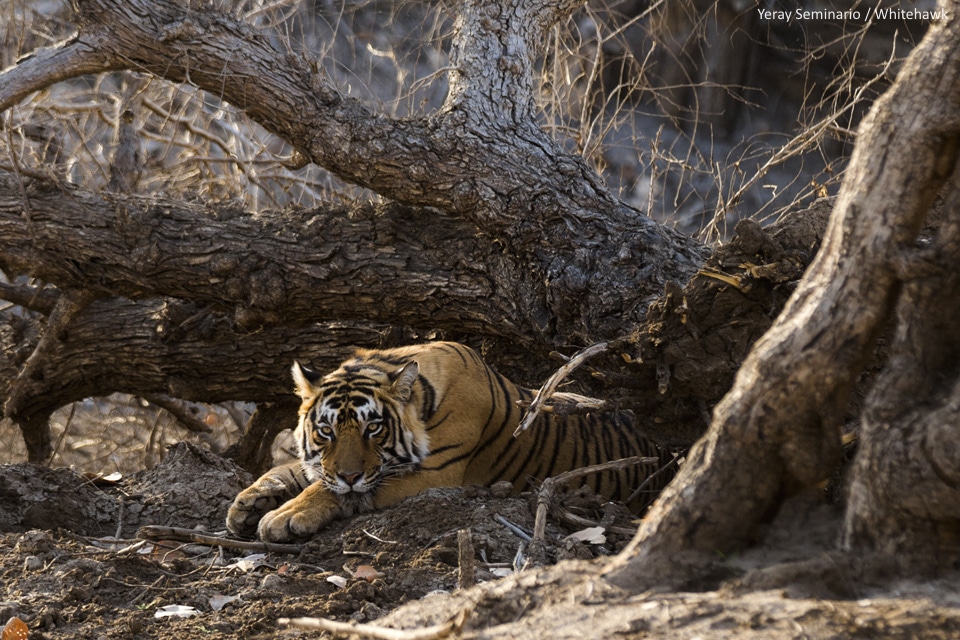
The snow leopard is also known as the “ghost cat.” This is due to its amazing powers of camouflage. I can attest first-hand to how easy it is to be watching a snow leopard slowly climbing up a steep slope only to have it “disappear” in front of your eyes. Its fur perfectly matches the rocks that make up its habitat and its spots play with your eyes, mimicking shadows into which it blends.
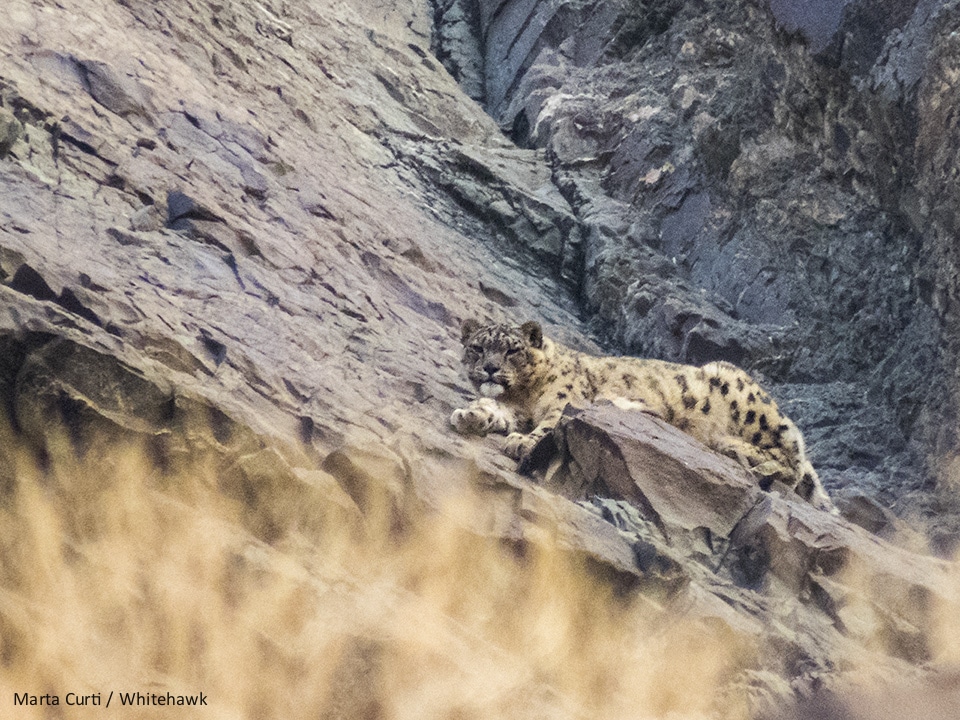
Family life of the snow leopard
Throughout their range, snow leopards tend to breed between January and the middle of March. Over 100 days after conception, the female will find a safe den to rest in. There, she will give birth to her cubs, which she will care for and raise on her own. When a snow leopard cub is born, it is completely helpless. It won’t open its eyes for the first seven days of its life. It relies on its mother’s milk for the first two months, after which it can begin to eat solid food.
After three months, the young cubs will be able to start following their mother around. At this time they begin to gain agility and strength and to learn important hunting skills that will serve them well once they leave their mother’s territory. Young snow leopards will remain with their mother for between 18 and 22 months.
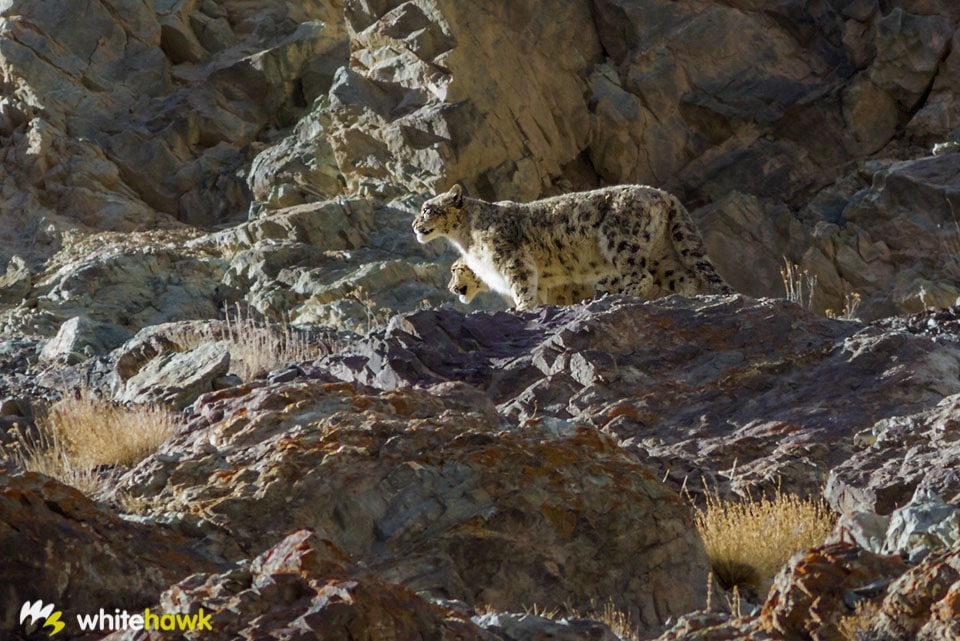
What does the snow leopard eat?
Large paws, a long and powerful tail, unbelievable camouflage, and incredible speed and agility make the snow leopard a formidable hunter. It mainly preys on ungulates – both wild and domestic. Snow leopards commonly hunt blue sheep, argali, and ibex. Though they can take prey three times their size, they will also feed on much smaller quarry including marmots, game birds, hares, and even rodents. When wild prey is difficult to come by, these large felines will also hunt domestic goats, sheep, horses, and camels.
When snow leopards catch relatively large prey, they are unable to consume it all in a single day. Once a kill is made, they will eat every few hours over a period of several days until nothing remains of their prey except bones. Of course, a fresh kill in this seemingly barren landscape can attract a whole host of scavengers including ravens, magpies, vultures, eagles, and foxes. So the snow leopard will remain very close to its food supply to make sure it is protected. Snow leopards make a fresh kill about every nine days or so.
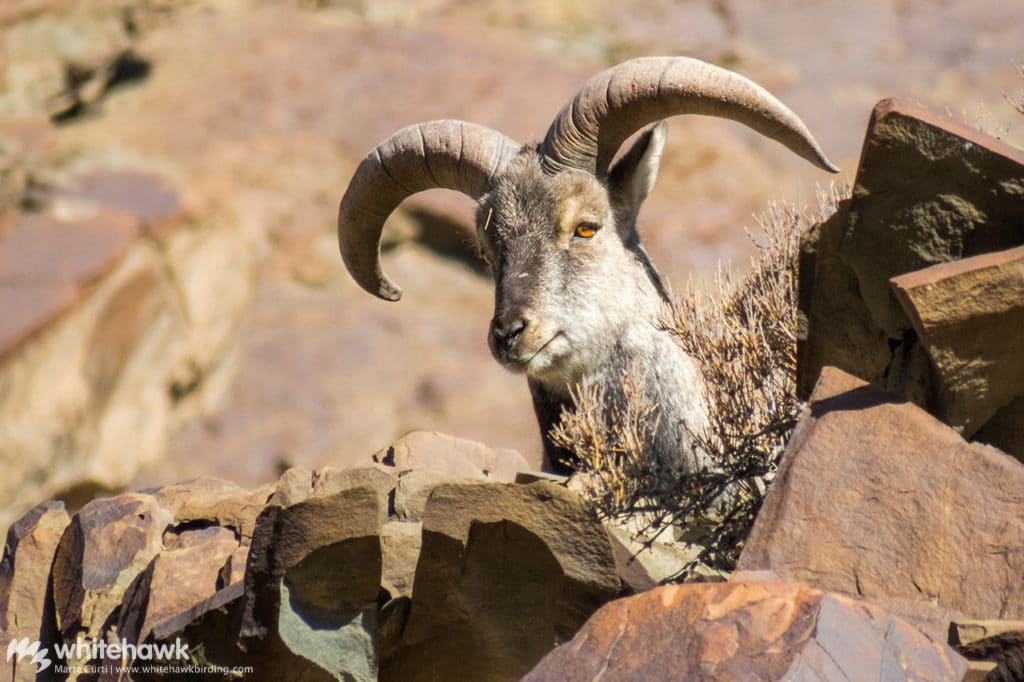
Other wildlife in snow leopard habitat
At first glance, the snow leopard’s habitat may seem barren and devoid of much life. While, of course, compared to many other habitats, it does lack abundant vegetation and high biodiversity, the truth is, there are plenty of other animals that share this extreme environment with this large feline.
Some of the birds we can find living side by side with snow leopards include Himalayan Vulture, Bearded Vulture, Golden Eagle, Chukar, Himalayan Snowcock, Tibetan Partridge, Hill Pigeon, Wallcreeper, Red and Yellow-billed choughs, Blue Whistling-Thrush, Robin Accentor, White-browed Tit-Warbler, and many others.
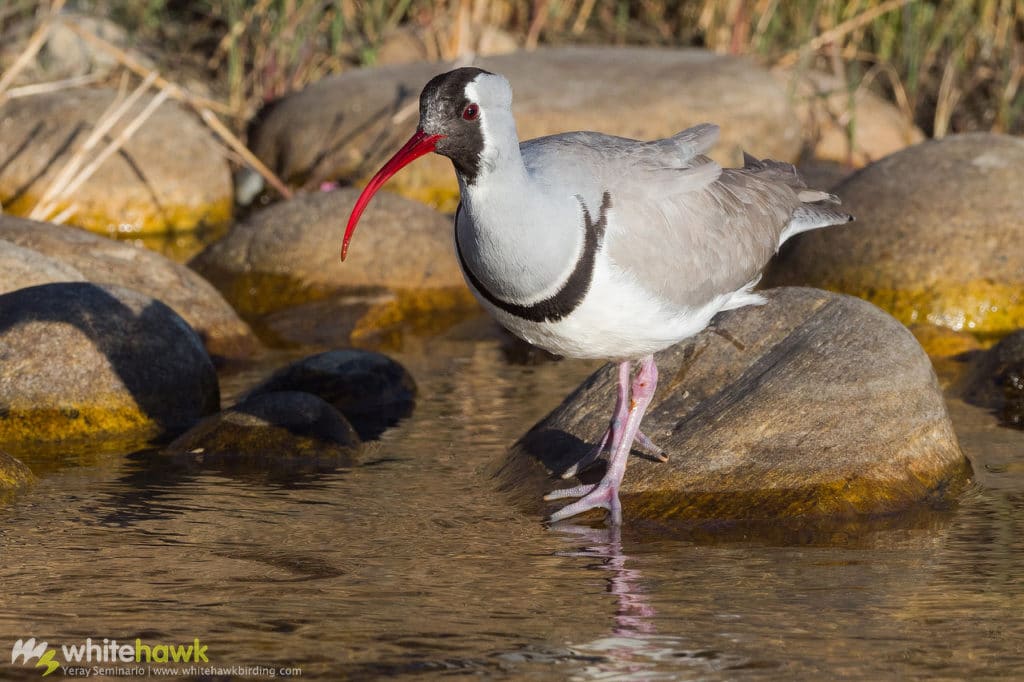
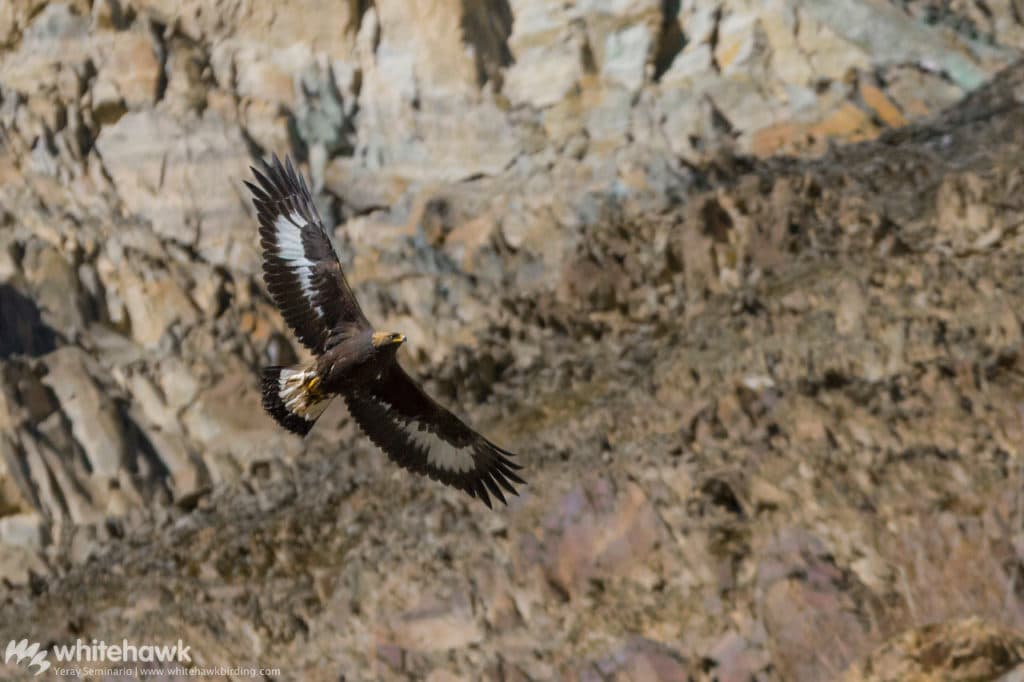
Mammals are abundant as well. They would have to be in order for the snow leopard to find enough to eat. Mammals found here include a number of different ungulate species including Bharal (Blue Sheep), Siberian Ibex, Wild Ass, and Urial, as well as smaller mammals such as pikas, hares, weasels, and voles. There are also wolves, foxes, lynx, Pallas’ cat, among so many others.
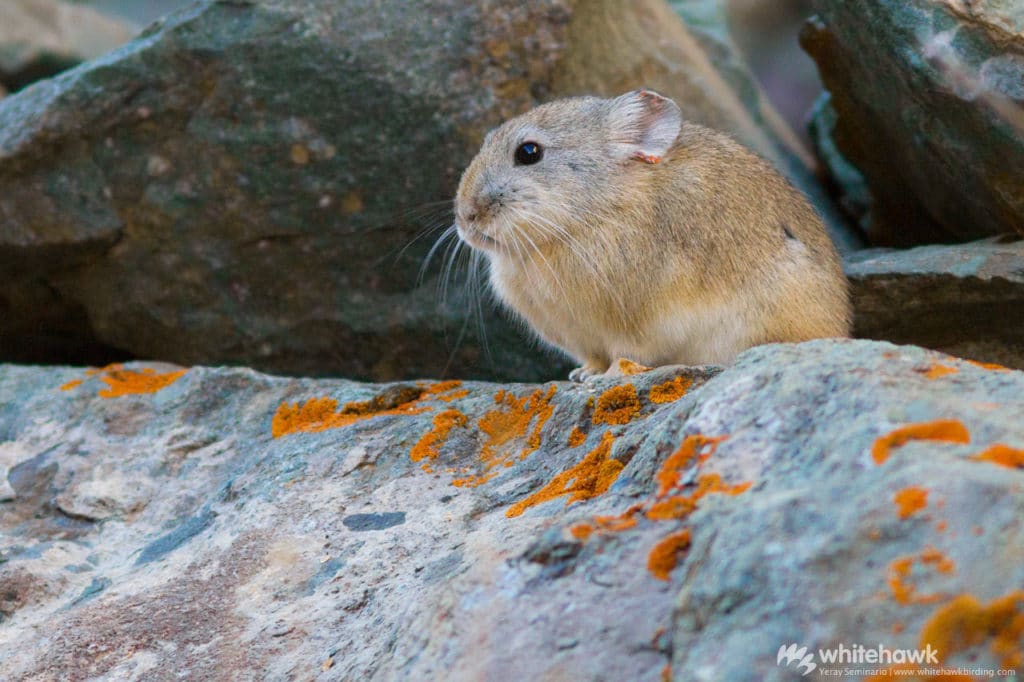
Conservation: how many snow leopards are left?
According to the International Union for the Conservation of Nature (IUCN), there are only between 2,700 and 3,386 mature snow leopards left in the wild. The snow leopard population is in decline throughout its range. Sadly, researchers estimate that people kill over 450 snow leopards annually. This, of course, has had a devastating effect on this large cat’s population. People kill snow leopards for a number of reasons. These can include to protect livestock from being predated or to sell their fur or other parts. Also, much of its once pristine habitat is being damaged. Roads, rail lines, and other human activities are putting this beautiful feline at risk. And of course, climate change could inextricably change snow leopard habitat forever.
Recently the IUCN changed the status of the snow leopard from Endangered to Vulnerable. However, many scientists disagreed with this status change. They believe that the snow leopard is in enough danger to warrant an Endangered status.
At times, things seem dire for the snow leopard. However, there are a multitude of governments, organizations, and individuals working to protect this majestic cat. Even tourists are getting in on the act. Engaging in home-stays with local families, purchasing locally-made crafts and goods, and supporting conservation organizations are all great ways to play your part in snow leopard conservation. Whitehawk donates some proceeds from all our tours to India to the Snow Leopard Trust.
Where and how to see snow leopards
There are opportunities for viewing snow leopards throughout much of their range. Hemis National Park in northern India offers one of the best chances of seeing these cats in the wild. Less than a 2-hour flight from New Delhi, this region is quite accessible. After a relatively short drive from the town of Leh, one can be at the gateway to the park in a few hours. After that, it is time to travel on foot. Along the walk, you will pass partially-frozen creeks, perhaps some wolf tracks, or maybe even a Himalayan Vulture soaring overhead.

Seeing a snow leopard in the wild can be quite challenging. It requires patience, perseverance, and at least a little bit of luck. Having great scouts helps, too. Local scouts are experts at using tracks and other clues to determine when and where a snow leopard might show up. Their help is key in helping to spot these “ghost cats” as they travel high up to the tops of rocky peaks or slink down into a shaded ravine.
When the snow is heavy at higher elevations, Blue Sheep and other ungulates will come to lower, snow-free elevations. This allows them to access vegetation which they feed on. The snow leopard, in turn, will follow its prey as well. So, a good time to search for snow leopards is between October and March.
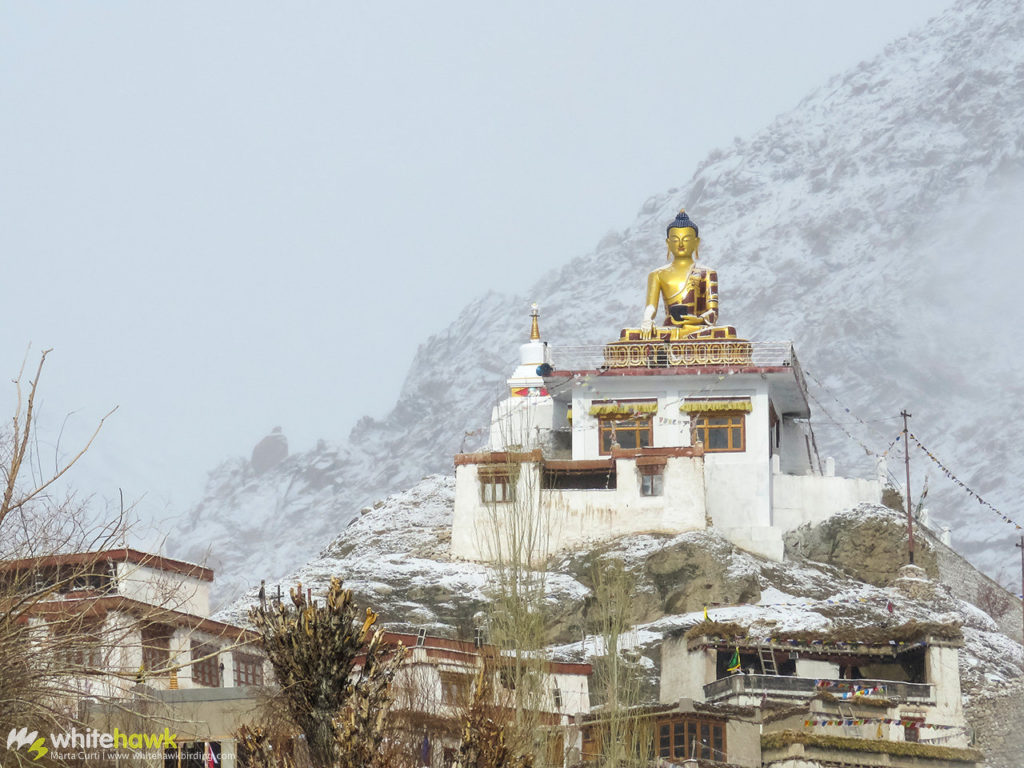
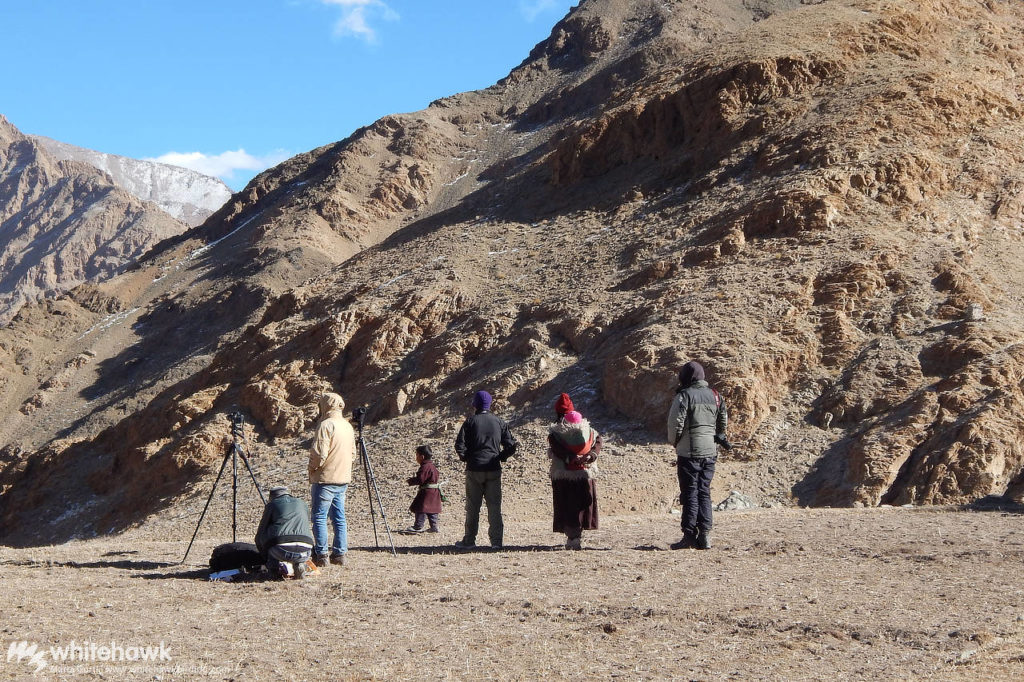
If you would like to learn more about these amazing cats or would like to join us in search of one, please contact us for more information. Be sure to check out our exciting tour, India: In Search of the Snow Leopard. It will give you a glimpse at the adventure that seeking out a snow leopard brings.
~ Marta

